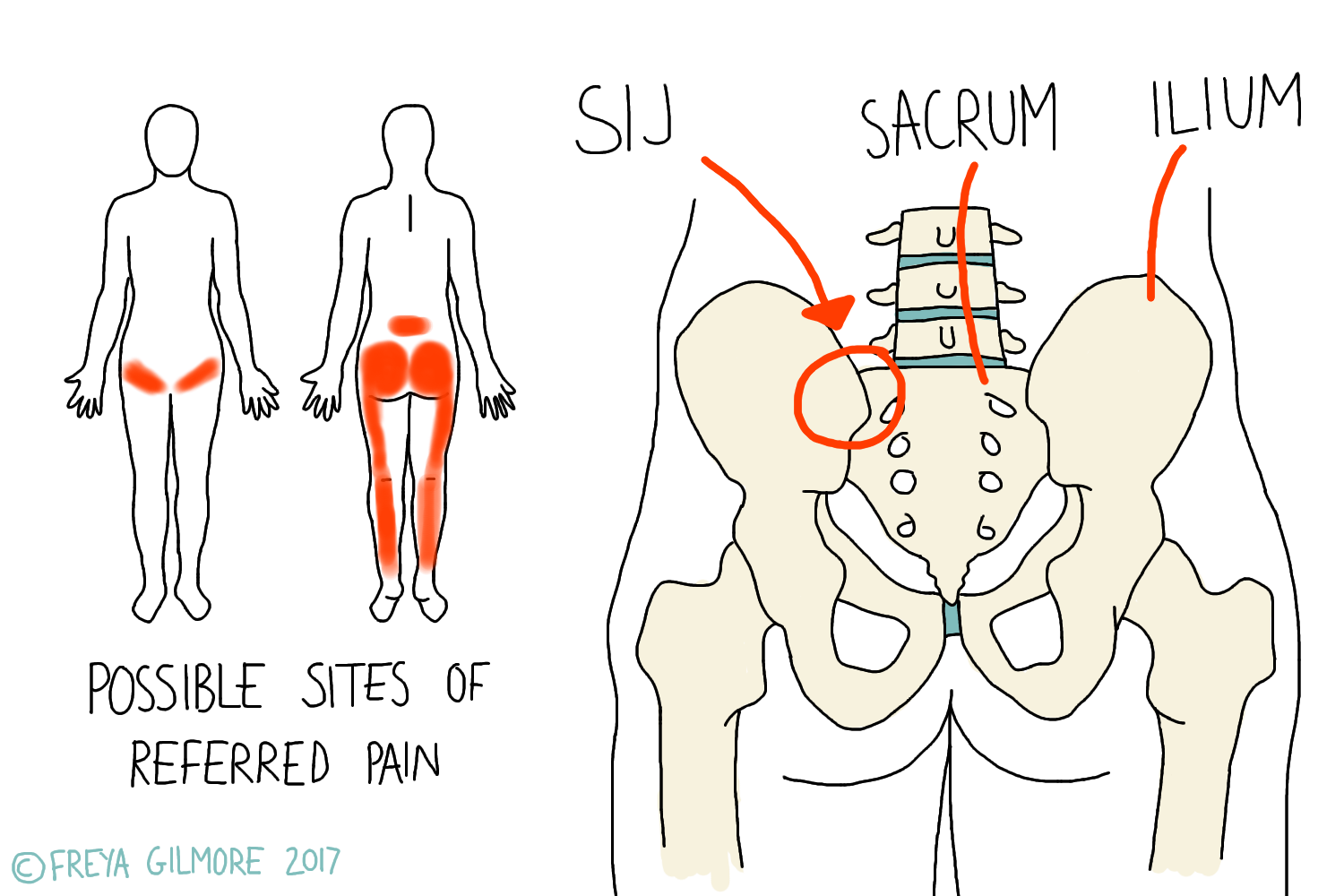The sacroiliac joint is a large joint on either side of the base of the spine. It does not allow a lot of movement, and its role is more about shock absorption than mobility. Due to its proximity to the spine, when it causes pain it can be mistaken for a spinal issue.
SIJ Anatomy
The SIJ is the joint between the base of the spine (sacrum) and part of the pelvis (ilium). Unlike joints within the spine, it is not well suited to a lot of movement. The SIJs are not smooth like spinal joints, rather the surfaces tesselate with each other and are supported by lots of ligaments. As a result, they are good shock absorbers, soaking up the forces that travel up from the legs during walking and exercise, reducing the need for cushioning in the lower back.
Referred Pain
Sometimes pain is felt far from its cause- this happens quite frequently with SIJ problems. The diagram above shows some of the patterns that can appear. Pain radiating down the back of the legs is often quickly labelled as sciatica, but with referred pain from the SIJ, the sciatic nerve is completely uninvolved.
Rather than the trapping of a nerve, the cause of these symptoms are misinterpretation of information by the brain. A signal is received to say that there is a problem in a large area, and rather than correctly identifying it as an SIJ issue, the brain assumes that the pain should be felt somewhere else. This is not a problem in itself, and your osteopath will look at your whole history and the way you move to work out the root cause.
The SIJs in Pregnancy
During pregnancy, the SIJs undergo the biggest changes they ever will. From the first trimester, hormones are released to prepare the pelvis to move in labour. The multitude of ligaments that support the joint become more relaxed, which can inadvertently cause lower back pain as the SIJ moves more than is comfortable and the rest of the back compensates.
This mobility allows the pelvis during labour to work with the baby en route down the birth canal. So while we wouldn’t want to restrict the new movement of the SIJs, we do still want you to be comfortable. Excessive movement during pregnancy can lead to pain across the front of the pelvis as well as the back, which is best managed with a strengthening routine. The sooner this can be addressed the better, as severe pain can limit your positioning options during birth.
Management
Once the SIJ is identified as the cause of your symptoms, we will also check which other areas are involved. Without trauma, the SIJs are unlikely to be symptomatic in isolation. Depending on the rest of your case, your treatment plan may be focused on exercises and strengthening, or improving mobility elsewhere in the body. Often a combination of mobilising and strengthening is appropriate.
Your osteopath will also be mindful of other conditions that can affect this area, including some rheumatological conditions like Ankylosing Spondylitis. Do let us know if your pain comes with prolonged morning stiffness, and can vary from severe pain and stiffness to nearly asymptomatic for seemingly no reason.
Click here to make an appointment for your SIJ or lower back pain in Naas






